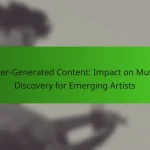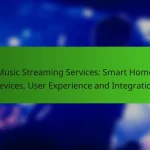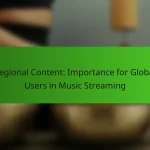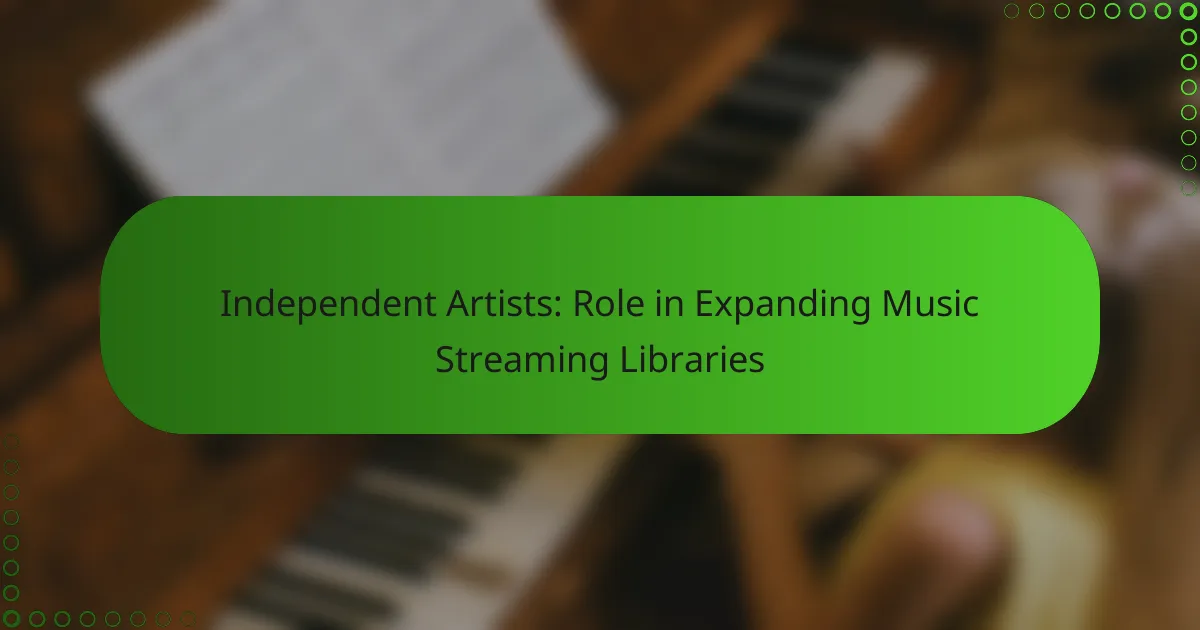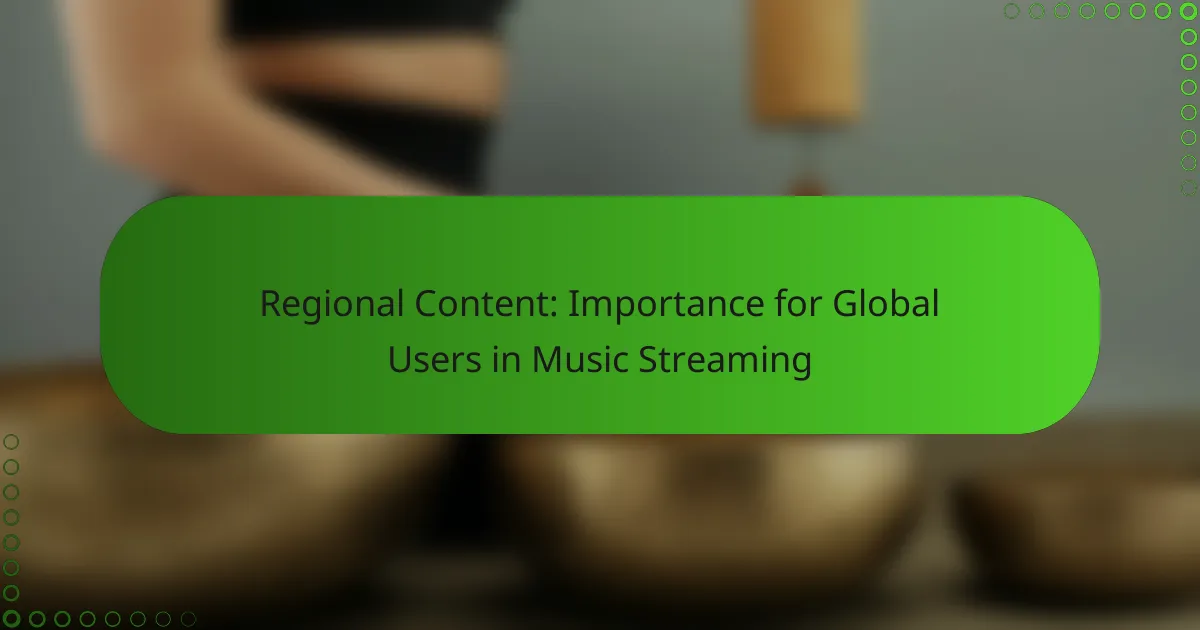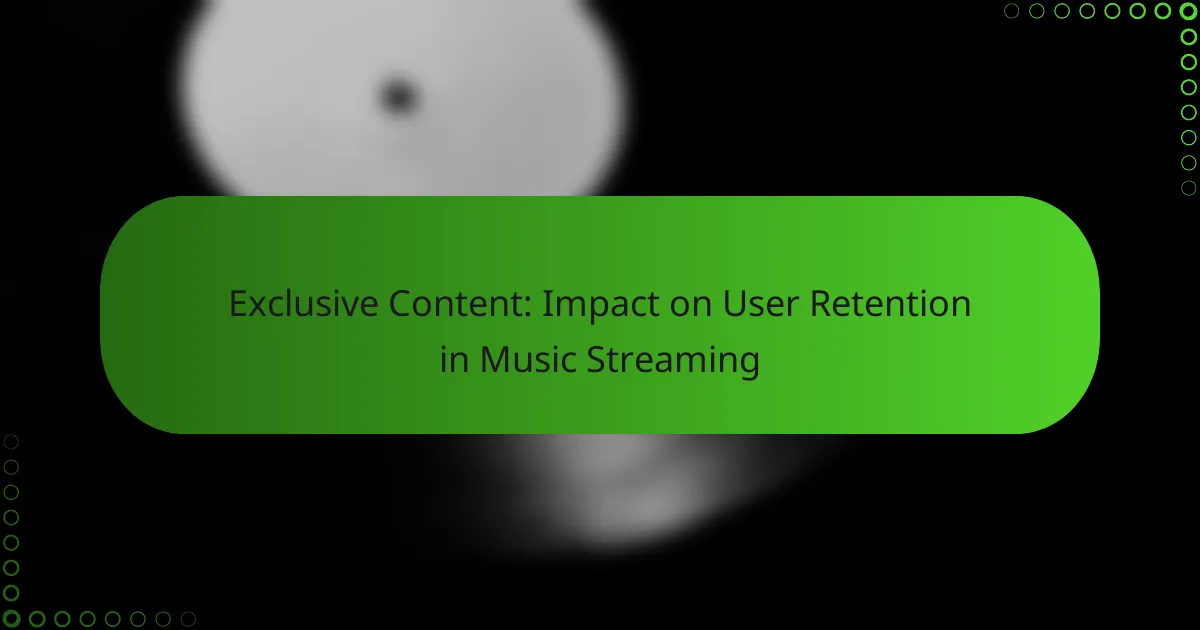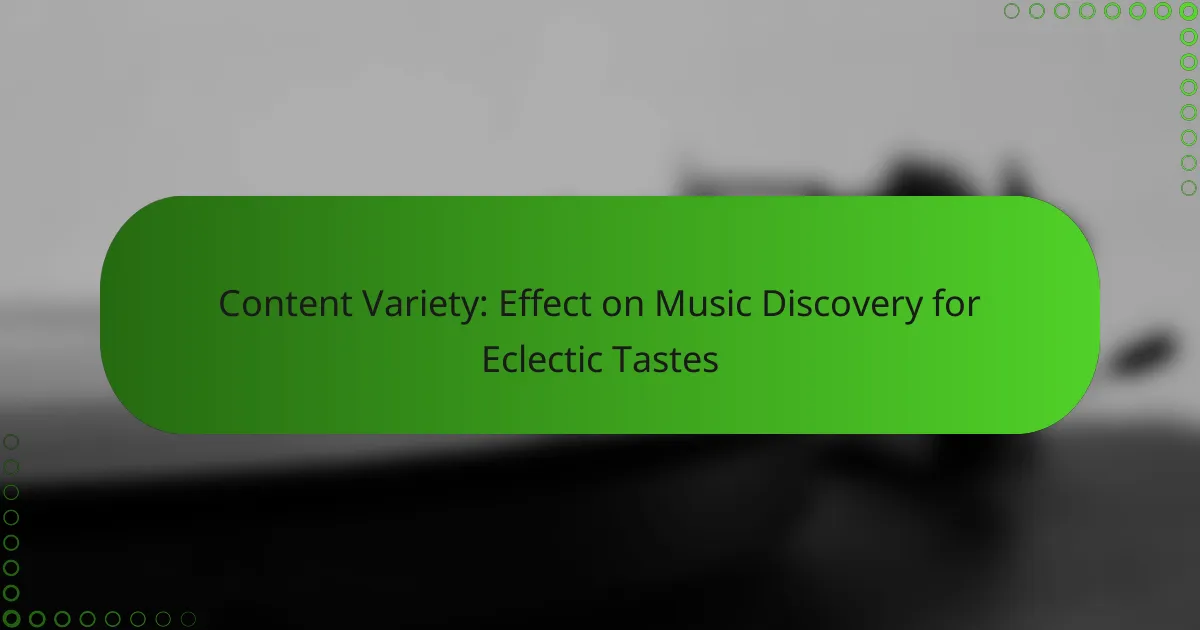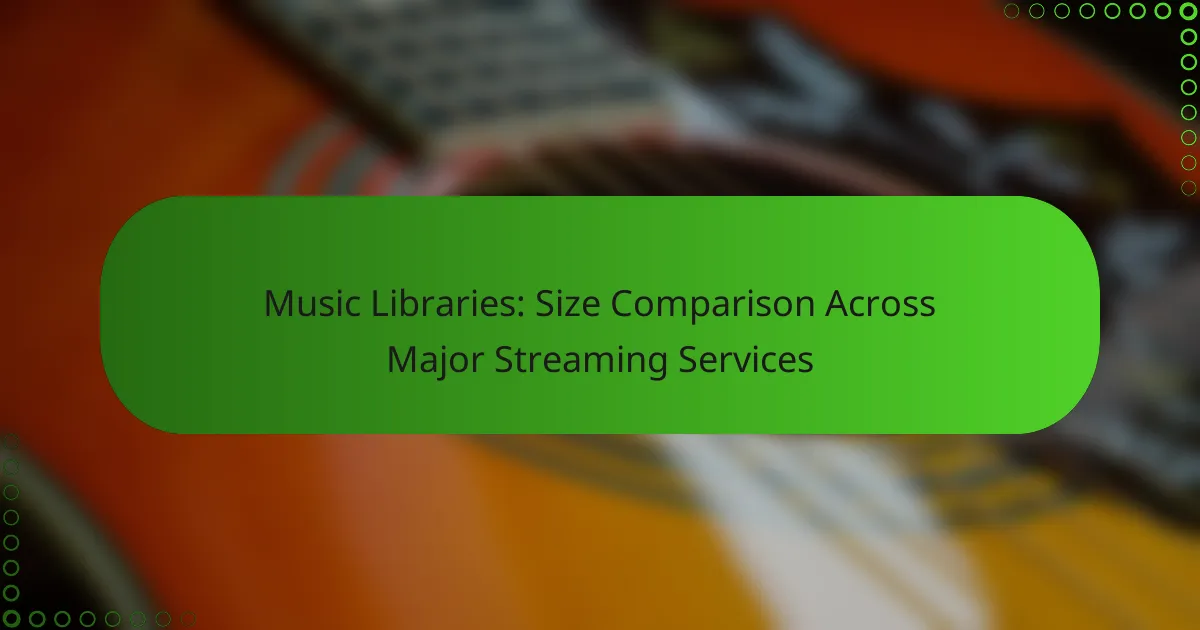Independent artists play a vital role in enriching music streaming libraries by offering diverse sounds and styles that often go unnoticed by mainstream labels. Their unique contributions not only enhance the variety of music available but also provide listeners with opportunities to explore new genres and discover emerging talent.
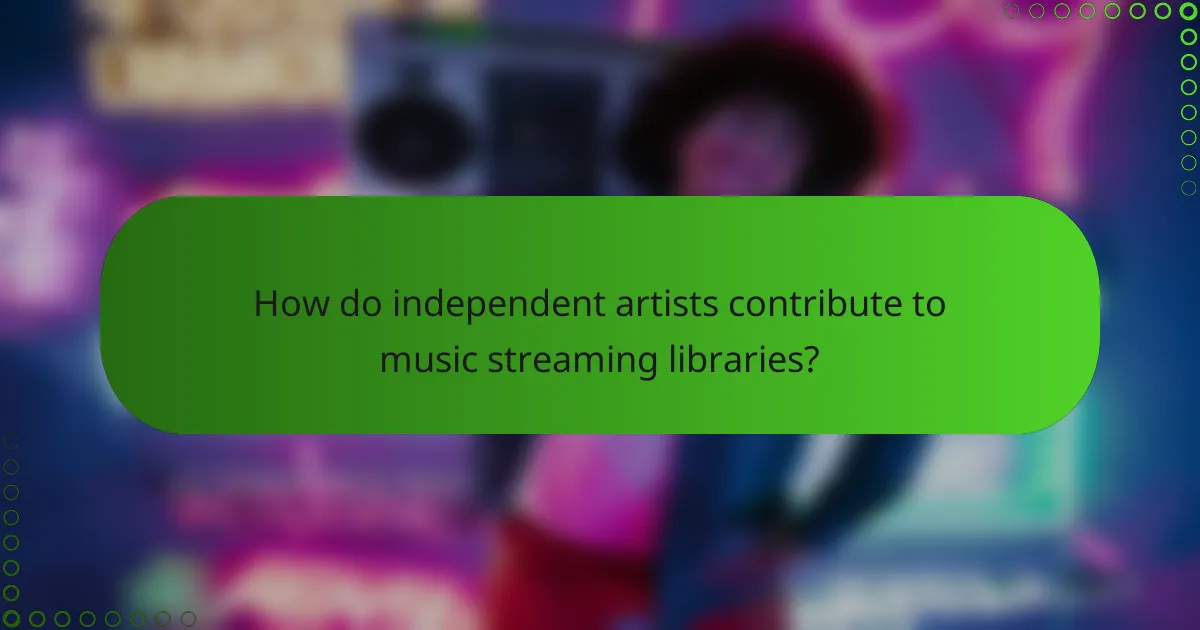
How do independent artists contribute to music streaming libraries?
Independent artists play a crucial role in expanding music streaming libraries by introducing unique sounds and styles that may not be represented by mainstream labels. Their contributions enhance the diversity and richness of available music, making it easier for listeners to discover new genres and artists.
Increased diversity of genres
Independent artists often explore unconventional genres and subgenres, bringing fresh perspectives to the music scene. This diversity enriches streaming libraries, allowing listeners to access a wider array of musical styles, from experimental electronic to folk fusion.
For example, platforms like Bandcamp and SoundCloud feature numerous independent musicians who create niche genres that may not receive attention from major labels. This variety encourages innovation and experimentation in music production.
Access to niche audiences
Independent artists frequently cater to specific audiences, creating music that resonates with particular communities or interests. This targeted approach allows streaming platforms to attract listeners who are looking for content that aligns with their tastes.
For instance, artists focusing on regional music styles or cultural themes can build dedicated followings, which helps streaming services offer more personalized recommendations. This connection fosters a sense of community among fans and artists alike.
Collaboration with established artists
Many independent musicians collaborate with established artists, which can lead to increased visibility and credibility for both parties. These partnerships often result in unique musical blends that appeal to a broader audience.
Such collaborations can take various forms, from guest features on tracks to co-writing songs. For example, an independent artist might work with a well-known musician to create a single that showcases their distinctive sound while reaching the established artist’s fanbase.

What challenges do independent artists face in music streaming?
Independent artists encounter several challenges in music streaming, including limited marketing resources, complex revenue sharing models, and visibility issues on platforms. These obstacles can hinder their ability to reach wider audiences and generate sustainable income.
Limited marketing resources
Independent artists often lack the financial backing and promotional tools available to major labels, making it difficult to market their music effectively. Without a dedicated marketing team, they must rely on social media, grassroots efforts, and word-of-mouth to promote their work.
To maximize their reach, independent musicians can utilize low-cost marketing strategies such as engaging with fans on platforms like Instagram and TikTok, or collaborating with other artists to tap into new audiences. Building a strong online presence is crucial for gaining traction.
Revenue sharing models
The revenue sharing models of streaming platforms can be challenging for independent artists, as they typically receive a smaller percentage of the total revenue generated. Most platforms operate on a pro-rata system, where earnings are divided among all rights holders based on total streams.
Artists should be aware that streaming payouts can vary significantly, often resulting in fractions of a cent per stream. To improve earnings, they may consider diversifying their income through merchandise sales, live performances, or crowdfunding campaigns.
Platform visibility issues
Independent artists frequently struggle with visibility on major streaming platforms, which often prioritize established or popular artists in playlists and recommendations. This can limit exposure for new and emerging talent.
To enhance visibility, independent musicians should focus on optimizing their profiles, engaging with listeners, and submitting their music to independent playlists. Networking with curators and participating in online music communities can also help increase their chances of being featured.
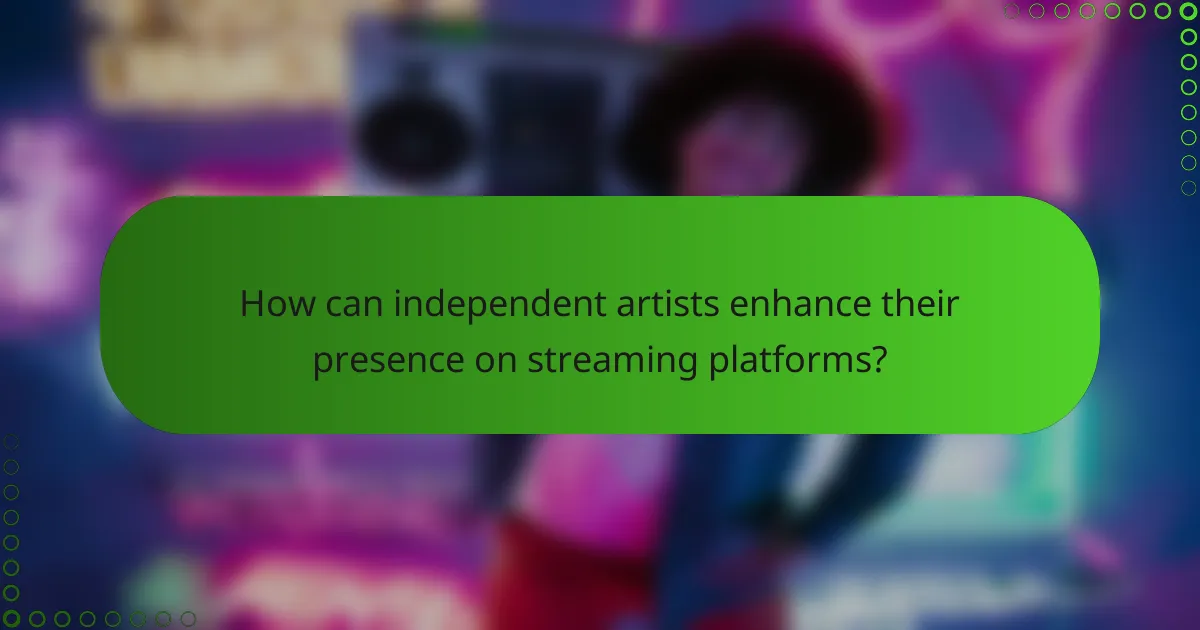
How can independent artists enhance their presence on streaming platforms?
Independent artists can enhance their presence on streaming platforms by actively promoting their music, engaging with fans, and strategically utilizing playlists. These actions can significantly increase visibility and listener engagement, leading to a broader audience and more streaming opportunities.
Utilizing social media for promotion
Social media is a powerful tool for independent artists to promote their music and connect with fans. Platforms like Instagram, TikTok, and Twitter allow artists to share updates, behind-the-scenes content, and snippets of their songs, creating buzz around new releases.
To maximize impact, artists should post consistently and engage with followers through comments and direct messages. Utilizing hashtags related to their genre can also help reach a wider audience and attract potential listeners.
Engaging with fan communities
Building a strong connection with fan communities is essential for independent artists. Engaging in conversations on platforms like Reddit, Facebook groups, or dedicated music forums can foster loyalty and encourage fans to share the artist’s work.
Artists can host Q&A sessions, live streams, or virtual meet-and-greets to deepen these connections. Offering exclusive content, such as early access to new songs or merchandise, can further incentivize fan engagement.
Leveraging playlists for exposure
Getting featured on playlists can dramatically increase an independent artist’s exposure on streaming platforms. Artists should research and submit their music to both official playlists curated by the platform and user-generated playlists that align with their genre.
To improve chances of being added, artists should ensure their tracks are high quality and fit the playlist’s theme. Networking with playlist curators and other artists can also lead to collaborative opportunities that enhance visibility.
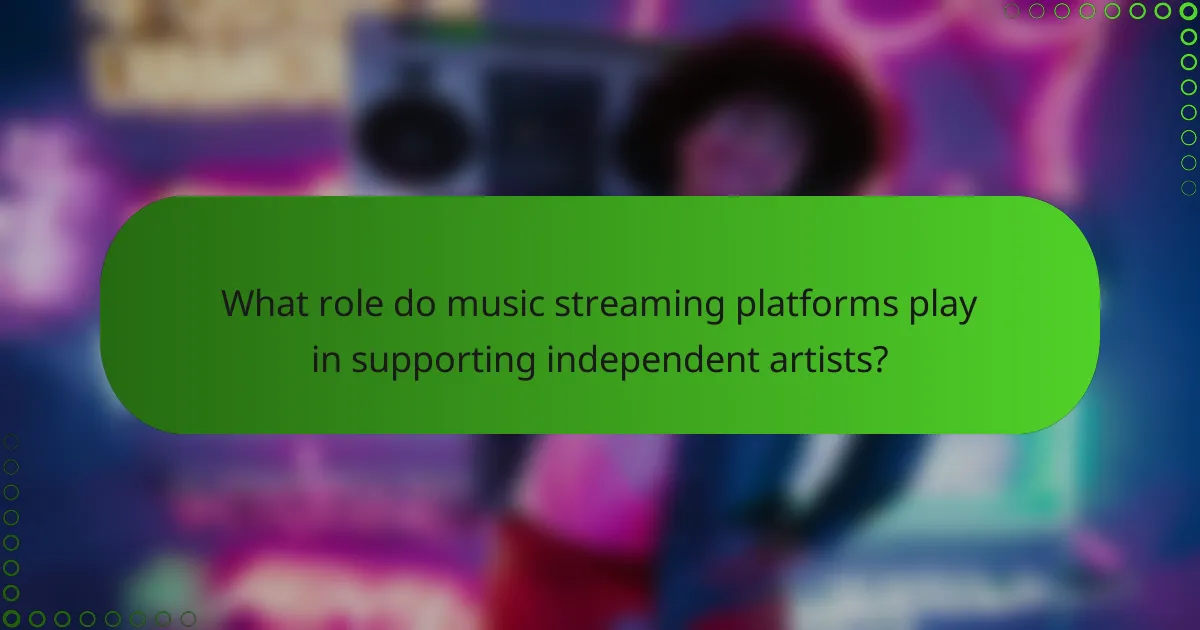
What role do music streaming platforms play in supporting independent artists?
Music streaming platforms significantly support independent artists by providing them with exposure, tools, and resources to reach wider audiences. These platforms enable indie musicians to distribute their music easily, access valuable data about their listeners, and participate in promotional initiatives that can enhance their visibility.
Curated playlists featuring indie music
Curated playlists are essential for independent artists as they help showcase their music to potential fans. Many streaming services create specific playlists that highlight indie genres, allowing artists to gain traction and connect with listeners who appreciate their style. Getting featured on these playlists can lead to increased streams and followers.
To improve chances of being included in curated playlists, artists should actively engage with curators and submit their tracks through the platform’s submission tools. Building relationships with playlist creators can also enhance visibility and create opportunities for future features.
Tools for analytics and audience insights
Music streaming platforms offer analytics tools that provide independent artists with insights into their audience’s behavior. These tools can reveal important metrics such as listener demographics, geographic locations, and streaming patterns. Understanding this data helps artists tailor their marketing strategies and improve their music offerings.
Artists should regularly review these analytics to identify trends and adapt their promotional efforts accordingly. For instance, if a particular song performs well in a specific region, artists can focus their marketing efforts in that area, potentially leading to more concert opportunities and fan engagement.
Partnership programs for promotion
Many music streaming platforms have partnership programs designed to promote independent artists. These programs often include features like promotional campaigns, social media support, and collaborations with other artists. Such initiatives can significantly amplify an artist’s reach and help them build a dedicated fan base.
Independent artists should explore these partnership programs and consider applying for any that align with their goals. Engaging with these opportunities can provide valuable resources and exposure that might otherwise be difficult to achieve independently.

How do independent artists impact the music industry landscape?
Independent artists significantly influence the music industry by diversifying the streaming libraries available to consumers. Their unique sounds and innovative approaches challenge mainstream norms, allowing for a broader range of musical expression and accessibility.
Shifting consumer listening habits
Independent artists are reshaping how listeners engage with music by offering fresh and varied content that often deviates from mainstream trends. This shift encourages consumers to explore genres and styles they may not have encountered otherwise, leading to a more eclectic listening experience.
As streaming platforms prioritize user-generated playlists and algorithm-driven recommendations, independent music gains visibility. This trend allows listeners to discover new artists and songs that align with their personal tastes, fostering a more personalized music experience.
Encouraging innovation in music production
The presence of independent artists in the music industry drives innovation in music production techniques and distribution methods. With lower barriers to entry, these artists often experiment with new sounds and technologies, pushing the boundaries of traditional music-making.
Many independent musicians utilize digital tools and platforms to create and distribute their music, leading to unique collaborations and creative processes. This environment encourages other artists to adopt similar approaches, resulting in a dynamic and evolving music landscape that reflects diverse influences and styles.
